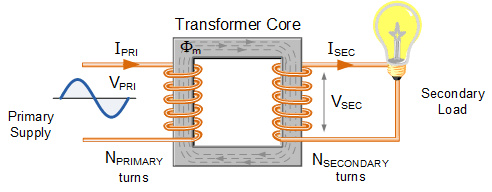
An Introduction To Distribution Transformers And Power Transformer
Both distribution transformers and power transformers are types of transformers that differ mainly in their main application areas and target loads.
A distribution transformer is a type of transformer used in low-voltage systems that deliver high-voltage power to end-users such as residential, commercial, and industrial facilities. Typically installed at the end of the grid, they convert high-voltage electricity from power plants into low-voltage electricity suitable for end-users. The voltage level of distribution transformers is usually below 35 kV, and the capacity generally does not exceed 5000 kVA.

Distribution transformers usually use oil-immersed transformers or dry-type transformers. Oil-filled transformers use insulating oil to cool the transformer and insulate electrical coils, while dry-type transformers use air or other gases to cool the transformer and insulate electrical coils.
The main role of distribution transformers is to deliver electricity to end users to meet their energy needs. They are usually installed at the end of the grid, for example on utility poles or in underground tunnels. In power systems, distribution transformers are very important components as they help ensure that power is properly transmitted and distributed to meet the needs of end users.
A power transformer is a type of transformer used to deliver high-voltage electricity to transmission lines in a power system. They are generally installed in power stations, substations and transmission lines of power systems to convert high-voltage electricity generated from power stations into low-voltage electricity suitable for transmission over long distances. The voltage level of power transformers is usually above 110 kV, and the capacity can range from thousands of kVA to several million kVA.
Power transformers usually use oil-immersed transformers or dry-type transformers. Oil-filled transformers use insulating oil to cool the transformer and insulate electrical coils, while dry-type transformers use air or other gases to cool the transformer and insulate electrical coils. The design and manufacture of power transformers requires a high level of skill and quality control to ensure that they operate safely and reliably as they carry greater electrical loads and higher voltages.
The main role of power transformers is to transfer power between different transmission lines and substations for transmission and distribution of power in the grid. In power systems, power transformers are very important components as they help ensure that power is properly transmitted and distributed to meet the needs of end users.
In addition, the design and manufacture of power transformers usually requires a higher level of technology and stricter quality control to ensure that they can operate safely and reliably as they carry larger electrical loads and higher voltages.
In addition to the differences in their primary applications and target loads, power transformers and distribution transformers have some other differences:
Voltage Regulation: Power transformers are designed to regulate voltage for long distance power transmission, while distribution transformers are designed to regulate voltage for local distribution networks. Power transformers are required to have a high voltage regulation accuracy, typically within a few percentage points, while distribution transformers have a lower voltage regulation accuracy, typically around 5-7%.
Cooling System: Power transformers are usually cooled by oil-immersed natural cooling or forced air cooling, while distribution transformers are usually cooled by natural air or forced air cooling. The cooling system of power transformers is designed to handle the higher heat generated by the higher power loads they carry.
Size and Weight: Power transformers are generally much larger and heavier than distribution transformers due to their higher power rating and the need for more insulation and cooling systems.
Location: Power transformers are usually located at electrical substations, which are usually situated at the boundary between the transmission and distribution networks, while distribution transformers are located closer to the end-user, usually on utility poles or in underground vaults.
Cost: Due to their larger size, higher power rating, and more complex design, power transformers are generally more expensive than distribution transformers.
